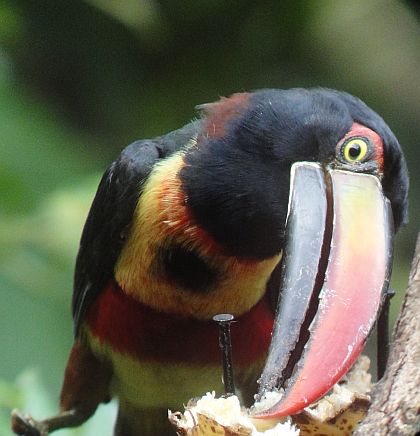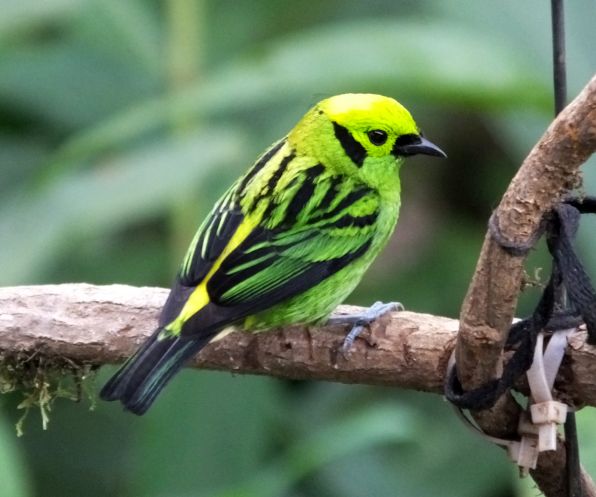There are 6 species of toucans in Costa Rica and birders visiting Costa Rica will be pleased to learn that most of them are fairly common! Colorful, big, and bold, these fancy birds are larger than life. On account of their fantastic appearance, these big-beaked birds have acted as inspiration for characters on everything from cereal boxes to marketing for a number of tropical destinations (Costa Rica included).
In Costa Rica, these surreal and wonderful birds occur in nearly every type of forested habitat. Three species live in the lowland tropical rainforests on the Caribbean slope. They include the bird with the rainbow-colored bill, the Keel-billed Toucan,

the Yellow-throated Toucan (formerly known as the Chestnut-mandibled Toucan and the Black-mandibled Toucan),

and the Collared Aracari.

Just above the lowlands, the elusive Yellow-eared Toucanet lurks in the foothill and lower middle elevation forests of the Caribbean slope.

Not nearly as common as the other toucan species, pairs of this special bird prefer to forage inside the forest and rarely come into the open. Some of the better spots for them are forests in the Arenal area, Volcan Tenorio, and the foothills of Braulio Carrillo National Park.
Higher still, we have a chance at seeing the beautiful Northern Emerald Toucanet. Smaller than other members of its family, this pint-sized green toucan is a common denizen of highland forests. Listen for its barking call and you might see one.

It helps that they also visit fruit feeders!
On the Pacific slope, Collared Aracaris also occur in forests of the Nicoya Peninsula and in some parts of Guanacaste. They share some space with Keel-billed Toucans in areas of moist forest, including sites in the Central Valley.
In the Central Valley and southern Pacific slope, Collared Aracaris are replaced by the flashy Fiery-billed Aracari. This near endemic is especially common in areas with humid forest. It shares such places on the south-Pacific slope with the Yellow-throated Toucan.

Although these toucan species occur at many sites, the places where they are most common are areas with extensive tropical forests replete with large trees used for nesting and as food sources. Since toucans are also omnivorous, their populations fare much better in high quality habitats that can provide them with plenty of fruit and small creatures. In Costa Rica, that would mean larger areas of mature tropical forest.
This is why we tend to find more toucans in Costa Rica in places like the Osa Peninsula, lowland and foothill rainforests in the Sarapiqui region, near Boca Tapada, Rincon de la Vieja, Monteverde, and forests in Limon province. More toucans usually means more of other wildlife because good numbers of these real life cartoony birds are indicative of healthy tropical forest that likewise provides habitat for hundreds of other birds, plants, and animals.
Such sites can be good places to look for manakins, cotingas, tinamous, and many other species that require healthy forest, including two species that prey on toucans; Ornate and Black-and-white Hawk-Eagles.
To find more toucans and the best places to see birds in Costa Rica, use this Costa Rica bird finding guide. I hope you have a wonderful birding trip to Costa Rica and hope to see you here!













